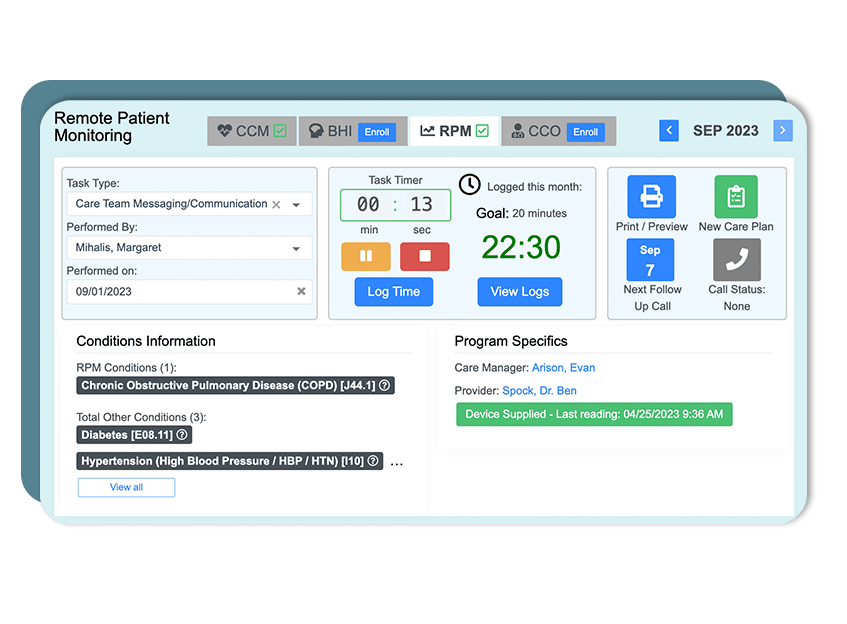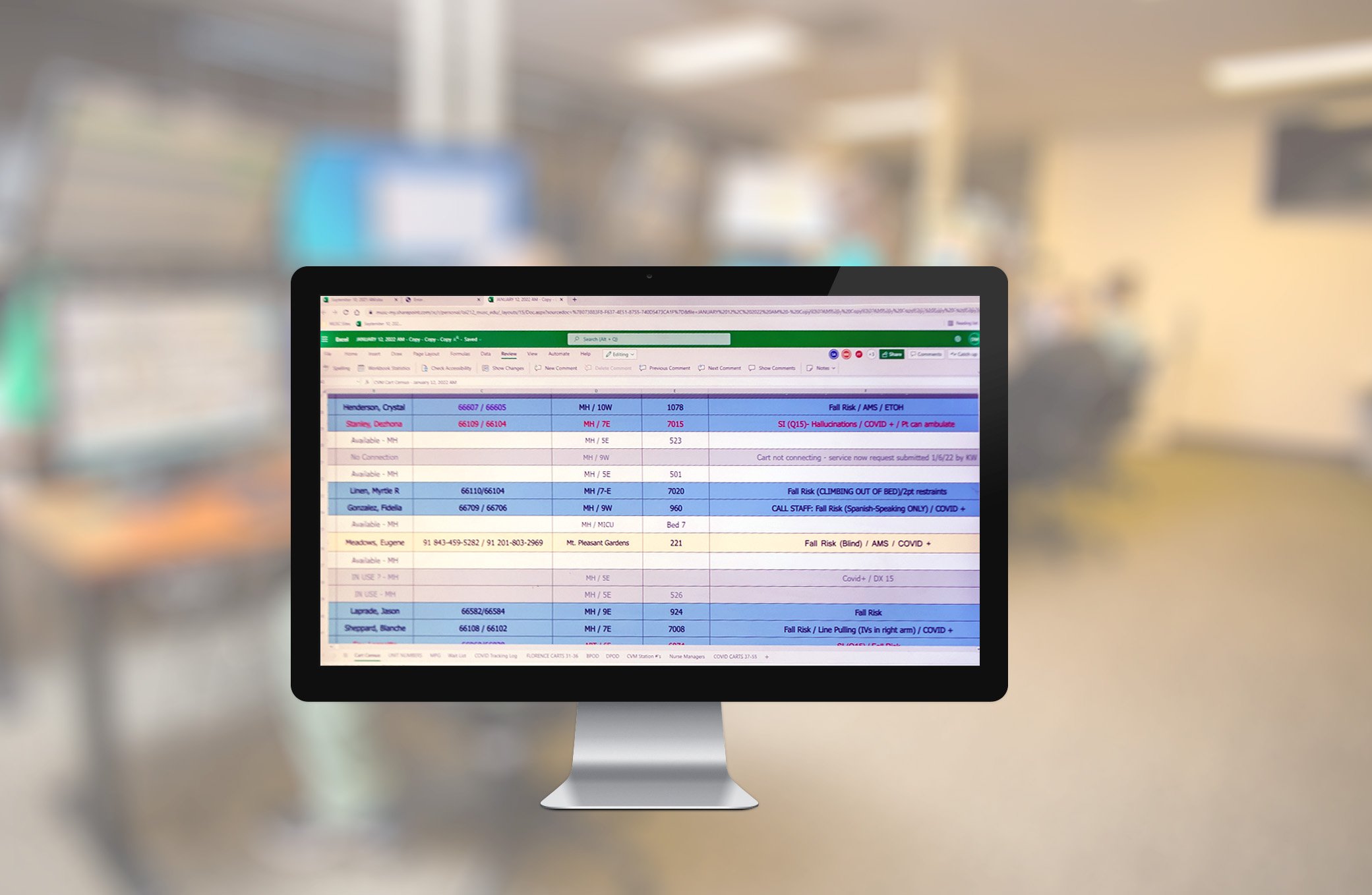User-Friendly Software for Remote Patient Monitoring: Easy Assimilation and Use
User-Friendly Software for Remote Patient Monitoring: Easy Assimilation and Use
Blog Article
The Future of Medical Care: Remote Individual Keeping Track Of Streamlined
As health care continues to advance, one area that holds tremendous promise is remote individual monitoring. The concept of simplifying this procedure through technical advancements is reshaping the means care is provided and gotten. With a focus on boosting patient end results and improving healthcare distribution, remote tracking is positioned to revolutionize the sector. By checking out the advantages, technical advancements, and future trends in this field, we can obtain beneficial insights into the transformative possibility of remote patient monitoring.
Advantages of Remote Person Surveillance
Remote individual tracking provides a plethora of benefits for both doctor and patients alike. One considerable benefit is the capacity to constantly keep track of patients' important signs and health data from another location. This real-time monitoring allows health care suppliers to find any type of worrying changes or patterns without delay, resulting in early treatments and possibly preventing medical emergencies. In addition, remote client surveillance enhances the overall quality of treatment by giving a much more thorough and alternative sight of clients' health and wellness status past standard in-person visits.
In addition, remote person monitoring can lead to better individual results and satisfaction. Remote tracking can reduce the demand for constant medical facility visits, reducing healthcare expenses for both service providers and individuals.
Technology Driving Remote Monitoring
In the realm of modern-day healthcare, technological developments play a pivotal function in driving the advancement and effectiveness of remote patient monitoring. The combination of innovative innovations such as wearable tools, mobile applications, and cloud-based systems has reinvented the means doctor remotely monitor and manage person health and wellness - software for remote patient monitoring. These innovations enable continuous real-time surveillance of essential indicators, medication adherence, and various other important wellness information, enabling timely treatments and personalized treatment plans
One key innovation driving remote tracking is the Web of Things (IoT), which enables seamless connectivity between clinical gadgets and health care systems. IoT gadgets such as smartwatches and cordless sensing units transfer and gather patient information to centralized systems, assisting in remote monitoring from anywhere in the world. Expert system (AI) and artificial intelligence algorithms better enhance remote monitoring by examining large quantities of individual information to spot patterns, predict health and wellness trends, and sharp healthcare carriers to possible issues.
Influence on Medical Care Distribution
With the integration of innovative modern technologies driving remote client surveillance, the effect on health care distribution is coming to be transformative and increasingly extensive. Remote patient tracking permits doctor to use more positive and customized like clients, causing improved health and wellness results and minimized hospital admissions. By remotely tracking vital indicators, signs and symptoms, and medication adherence, medical care professionals can step in early, protecting against complications and boosting the total top quality of care.
Moreover, remote monitoring improves access to healthcare services, especially for individuals in rural or underserved locations. Clients can get continual monitoring and support from their homes, getting rid of the demand for frequent in-person sees. This not just saves time and minimizes expenses for both individuals and health care facilities yet also lessens the threat of exposure to infectious illness, a vital factor to consider in the existing healthcare landscape.
Furthermore, remote individual surveillance enables health care suppliers to better assign resources and focus on care based upon real-time information. By determining risky clients and stepping in quickly, health care shipment look what i found becomes extra reliable and efficient, eventually leading to a much more lasting and patient-centered healthcare system.
Improving Individual Results

Moreover, RPM permits for proactive monitoring of persistent problems, minimizing the likelihood of intense worsenings and hospital readmissions. Individuals take advantage of boosted ease and comfort, as they can receive treatment in their own homes while staying linked to their health care companies. This constant surveillance not only boosts patient fulfillment but additionally promotes a feeling of empowerment and engagement in their very own health and wellness monitoring.
Future Trends in Remote Surveillance
Embracing sophisticated modern technologies in remote individual monitoring is forming the future landscape of healthcare delivery. The future fads in remote surveillance are anticipated to reinvent the method medical care is supplied, making it a lot more effective and patient-centric. One significant fad is the increased use of wearable gadgets and sensing units to gather real-time data, enabling health care providers to keep an eye on patients continually without the demand for constant in-person brows through. These gadgets can track vital indications, drug adherence, and activity levels, giving a thorough view of the person's health condition.

Furthermore, telehealth systems are becoming extra advanced, permitting virtual assessments, remote diagnosis, and remote client keeping track of all in one integrated system (best remote patient monitoring software). This alternative strategy to remote surveillance is streamlining healthcare shipment, improving person fulfillment, official site and ultimately, boosting total high quality of treatment
Verdict
Finally, remote patient tracking offers numerous benefits in health care shipment, driven by developments in technology. It has the prospective to boost individual end results and reinvent the method medical care is delivered. Future fads in remote tracking will remain to shape the landscape of health care, supplying opportunities for even more effective and individualized individual care.
Remote person surveillance offers a wide variety of advantages for both health care providers and clients alike. Furthermore, remote client monitoring boosts the overall high quality of care by giving a much more extensive and holistic sight of patients' health and wellness condition beyond conventional in-person check outs.
Additionally, remote person surveillance can lead to improved client end results and complete satisfaction. Remote individual tracking allows medical care carriers to provide even more individualized and proactive treatment to patients, leading to enhanced wellness end results and decreased health center admissions. Remote patient tracking (RPM) plays a considerable role in improving person outcomes by providing constant, real-time data that allows medical care service providers to step in promptly and readjust treatment plans as needed.
Report this page